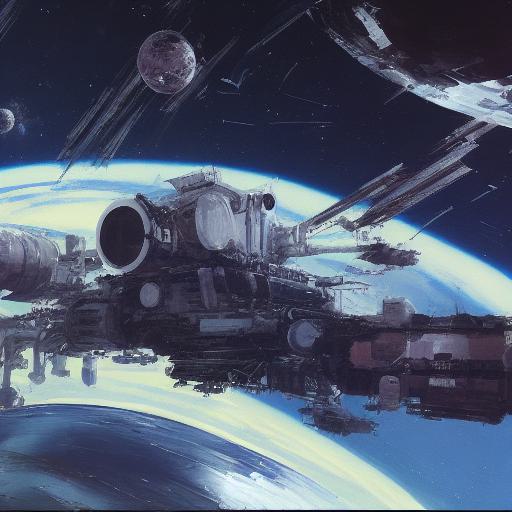About John Berkey
John Berkey (1932-2008) was an American artist known for his science fiction and fantasy-themed paintings. Berkey’s work often depicted futuristic and otherworldly landscapes, spaceships, and creatures, and he is widely regarded as one of the most influential science fiction artists of the 20th century.
Berkey’s paintings are characterized by their striking use of light and shadow, dramatic compositions, and attention to detail. He often worked with a limited color palette, using muted tones to create a sense of depth and atmosphere in his work.
Publications of John Berkey
Berkey’s art has been featured in numerous publications, including science fiction novels, magazines, and album covers. He also worked on several Hollywood films, including “Star Wars” and “The Towering Inferno,” creating concept art and visual designs.
Today, John Berkey’s work continues to inspire and influence artists and fans of science fiction and fantasy around the world.
What is AI-generated art?
The term AI-generated art refers to artwork that is produced using artificial intelligence algorithms, resulting in faster and more efficient image creation. This modern technique offers numerous benefits over traditional art-making methods, such as the ability to experiment with diverse styles and techniques while creating designs that fit specific requirements. AI-generated art also supports diversity and inclusivity within the art world by providing artists from different backgrounds with a platform to express their unique experiences and perspectives.
To incorporate AI-generated art into their projects, designers can easily use online tools like Visual Paradigm Online. Additionally, websites such as Stable Diffusion, Midjourney, and Dalle 2 provide artists with the opportunity to create their own AI-generated art and explore the countless creative possibilities that this technology offers.
How to create this prompt?
Firstly, the prompt sets the scene for the image, providing a description of a space station in the background. This gives the AI model a starting point to work from and helps to narrow down the possibilities of what the final image might look like.
The prompt also specifies that the concept art should be inspired by John Berkey, who was a well-known science fiction artist. This reference provides additional guidance on the style and aesthetic that the image should aim to capture.
The mention of the “cg society contest winner” and “space art” further refine the prompt and suggest that the image should be visually striking and technically impressive. This can help to push the AI model to generate an image that is complex and detailed, with a high level of fidelity to the real world.
Finally, the prompt specifies that the space station should feature “white plastic panels,” which provides a specific visual detail for the AI model to include in the image. This can help to make the image more coherent and believable, as well as give it a sense of texture and depth.
Overall, each individual part of the prompt contributes to the final image in a different way. By providing a detailed description of the scene, referencing specific artists and styles, and including visual details like the white plastic panels, the prompt helps to guide the AI model towards generating an image that is aesthetically pleasing, technically impressive, and conceptually coherent.


